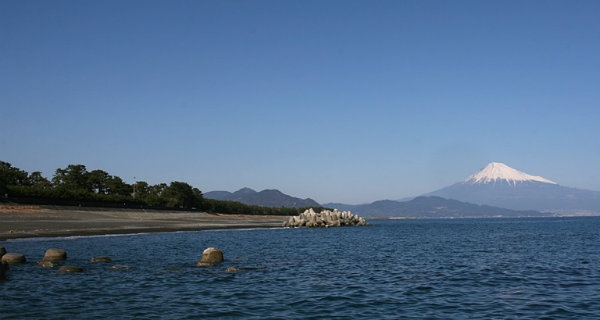Japan's Top 4 'Best 3' Sightseeing Spots!
Have you ever wondered what the most spectacular views in Japan are? What are Japan’s Three Scenic Spots and who designates what goes on these lists? Find out the answers to these questions and more while checking out some of the best scenery Japan has to offer.
By SoraNews24In 1915, a publishing company called Jisugyo no Nishonsha decided to hold a contest to determine "The New Three Views of Japan" (Shin Nihon Sankei). As a result, these next three spots were the only ones to make the cut:
1. Onuma (Hokkaido)
https://upload.wikimedia.org/wikipedia/commons/2/28/Komagatake_dusk.jpg
Onuma is the name of the large pond in the Onuma Quasi-National Park in southwest Hokkaido. The outline of the oddly shaped Kamogatake active volcano can be seen in the reflection of the pond.
2. Miho no Matsubara (Shizuoka)

https://upload.wikimedia.org/wikipedia/ja/5/53/Mt_Fuji_at_Mihonomatsubara.jpg
From Miho no Matsubara you can see across Suruga Bay to Mount Fuji and the Izu Peninsula. This 7-kilometer (4.3-mile) pine tree-studded beach also lands on another of Japan’s lists: the top 100 white sand beaches and green pine groves. The scene was favored by ukiyo-e woodblock print artist Hiroshige Utagawa (1797–1858).
The white sand has mostly disappeared these days, but before we tell you why, we should tell you the legend called Hagoromo (“The Feathered Robe”). The story goes that a celestial maiden was flying over Miho no Matsubara and, enticed by the beauty of the beach, she alighted on this bewitching land. She hung her feathered robe on a pine tree, as celestial maidens tend to do, and dipped into the water. While the lovely woman was bathing, a rather perverse man came along, seized her robe and wouldn’t give it back, demanding that she perform a heavenly dance for him.
So she “danced in the spring twilight,” and then flew away under a full moon in her feathered robe, leaving the salacious man looking on longingly.
The revered pine tree, named Hagoromo no Matsu, is at least 650 years old and is a local tourist attraction. But the story gets even more sordid because our own greedy selves are responsible for the disappearance of the white sand beach. It is said that when Japan built the first Shinkansen, back in the early 1960s, so much white sand was used to make the concrete that it all but disappeared. Perhaps that’s why there have been no celestial maidens in feathered robes gracing the shores since.
3. Yabakei (Oita)

https://upload.wikimedia.org/wikipedia/commons/d/d8/Kyoshuho.jpg
Let’s not pick on this gorge just because it doesn’t have a lake, sea, or mountain around it to enhance its view. This lonely chunk of rock on the Yamakuni River in Oita Prefecture’s Yaba-Hita-Hikosan Quasi-National Park probably would have gone completely unnoticed had it not been designated a Shin Nihon Sankei (later to become an official government meisho).
Coming up next is "The Three Major Night Views of Japan" or as they are better known in Japan, Nihon Sandai Yakei.





